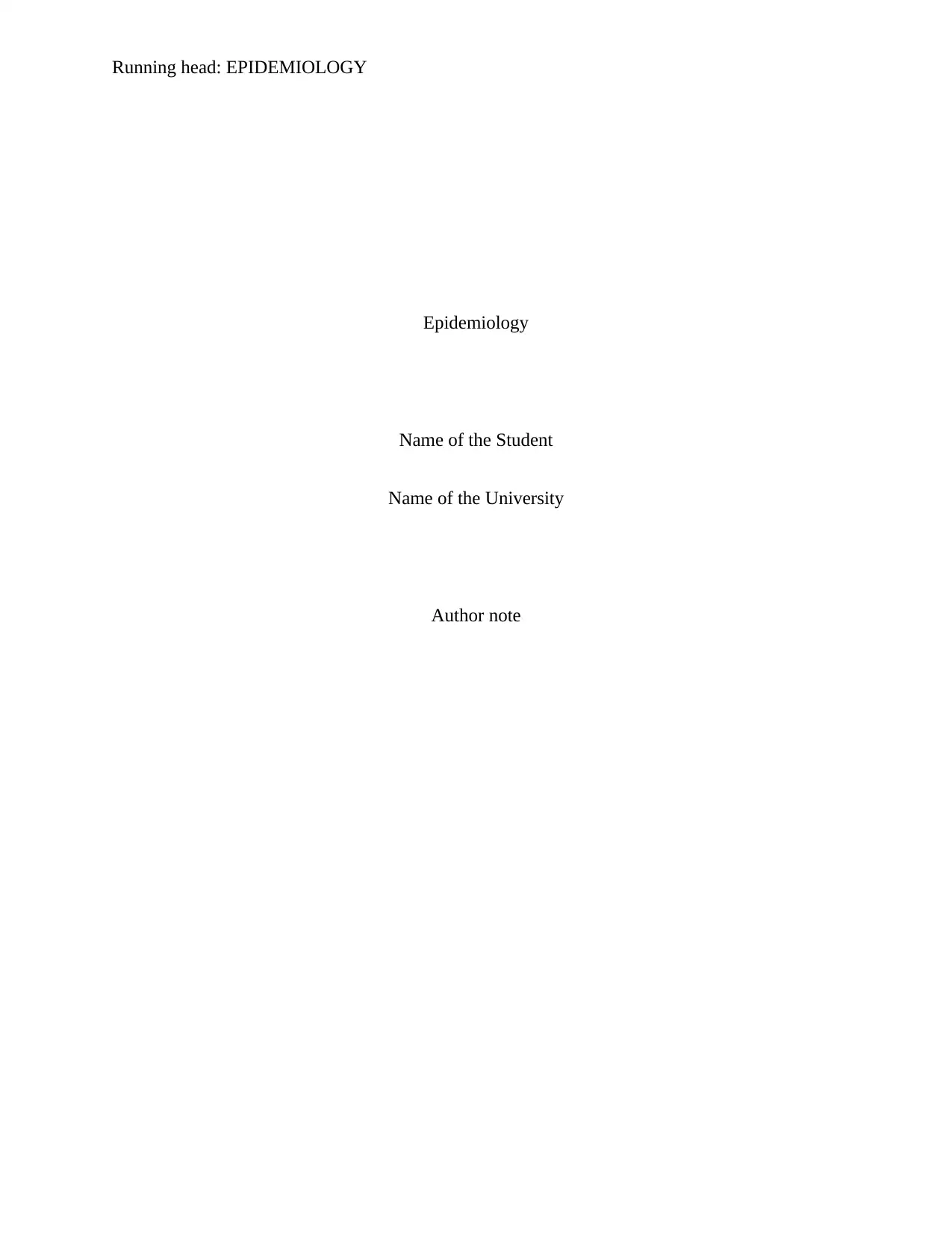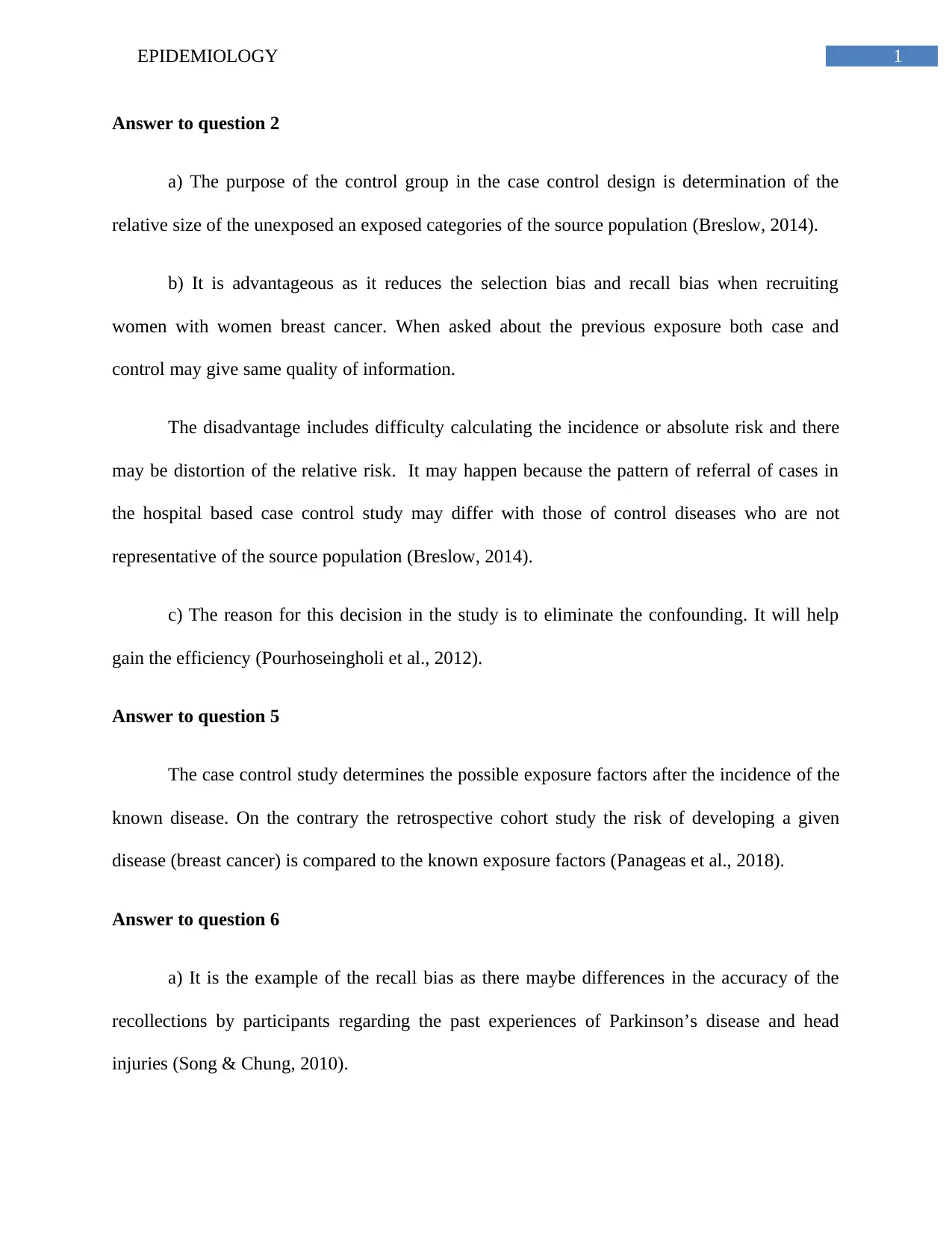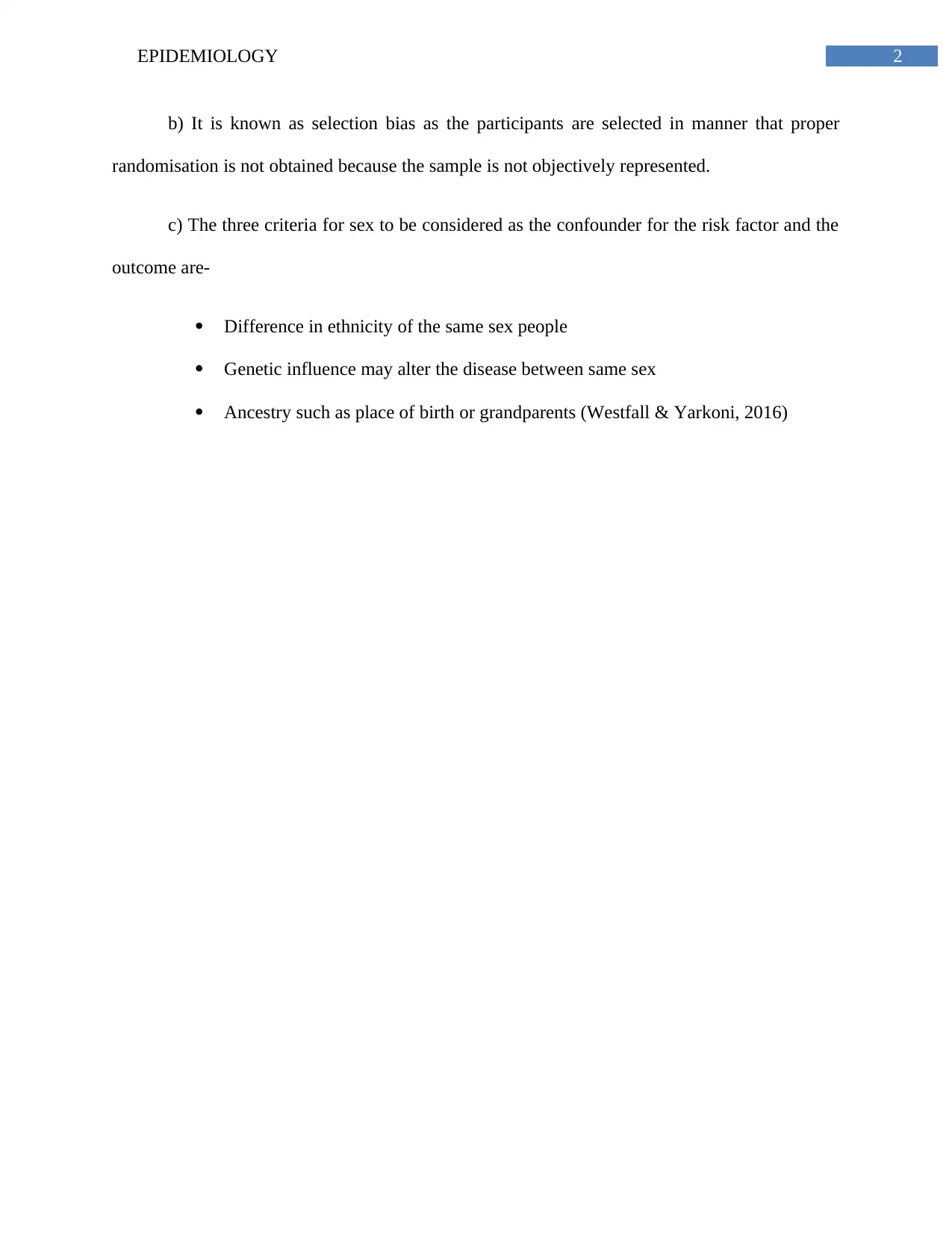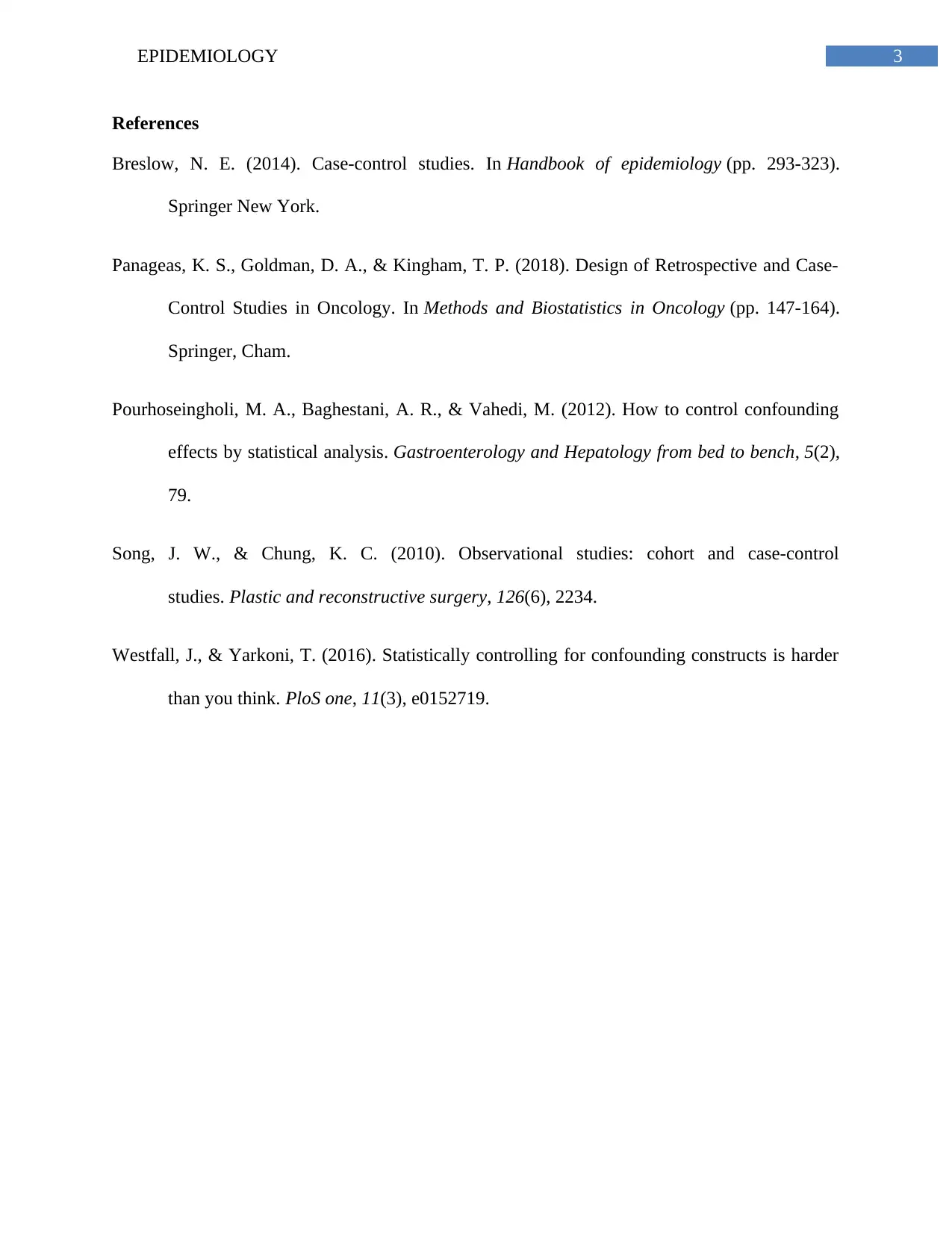Epidemiology Assignment Solution: Analysis of Study Designs and Biases
VerifiedAdded on 2021/06/15
|4
|544
|220
Report
AI Summary
This report provides a detailed analysis of an epidemiology assignment, focusing on case-control and cohort study designs. It examines the purpose of control groups, advantages and disadvantages of case-control studies, and the importance of controlling for confounding factors. The solution addresses recall and selection bias, highlighting how they can affect study results. Furthermore, it explores the differences between case-control and retrospective cohort studies. The assignment also discusses the criteria for a confounding factor, providing a comprehensive overview of epidemiological concepts. References are provided to support the analysis.
1 out of 4











![[object Object]](/_next/static/media/star-bottom.7253800d.svg)